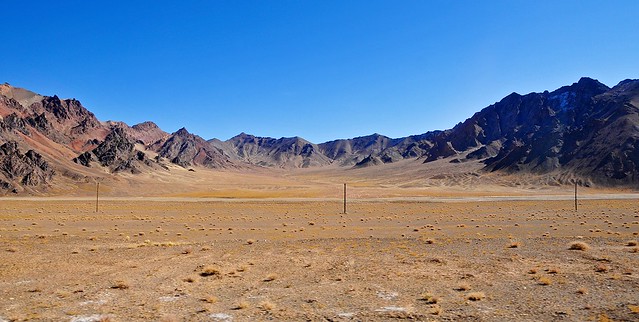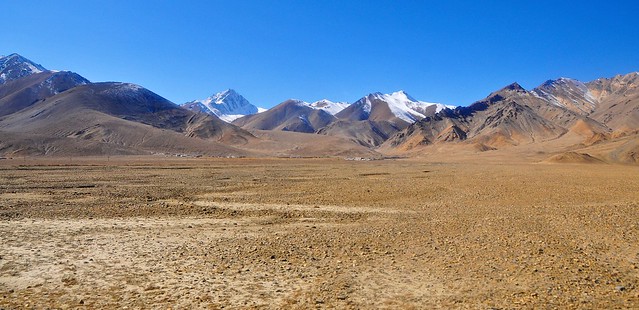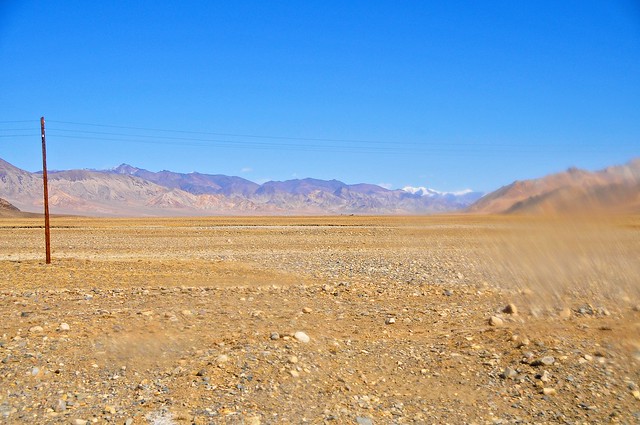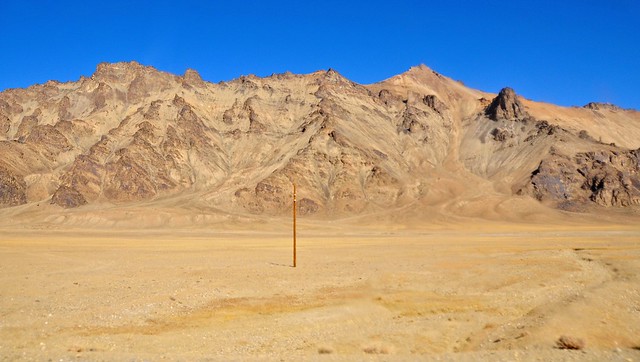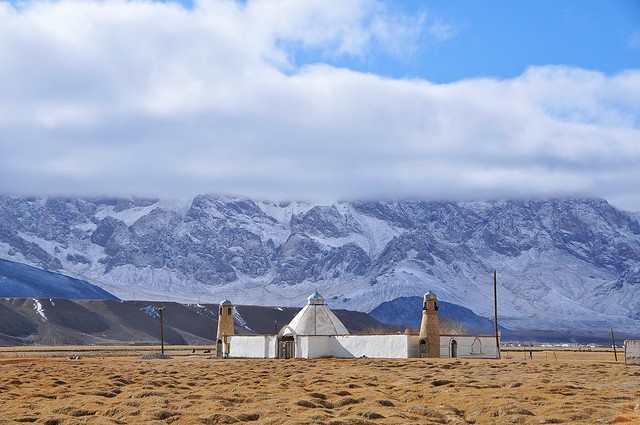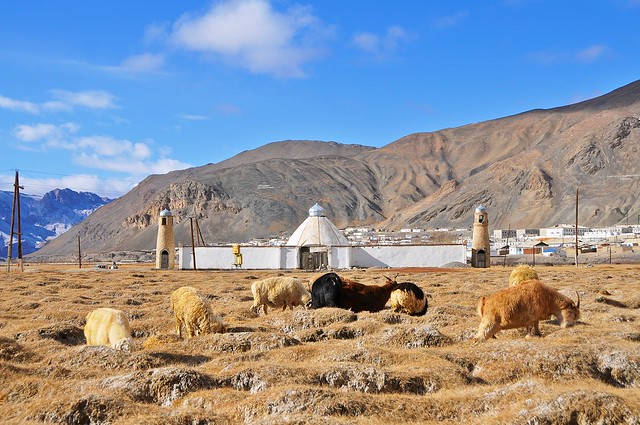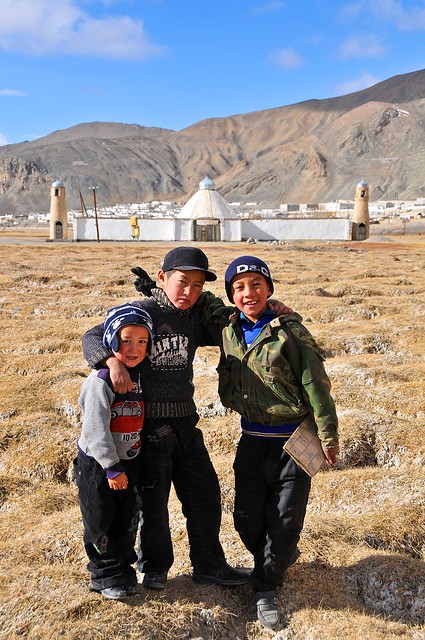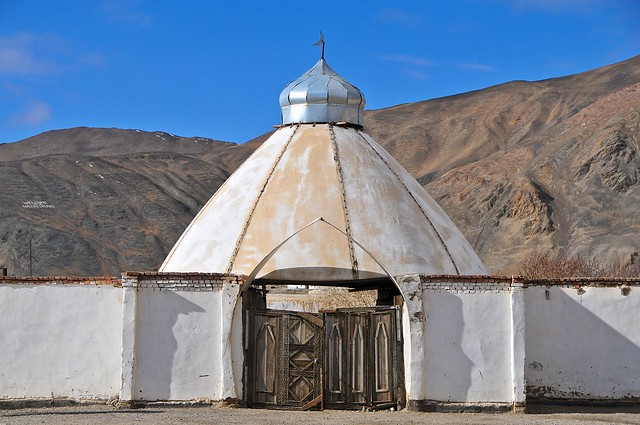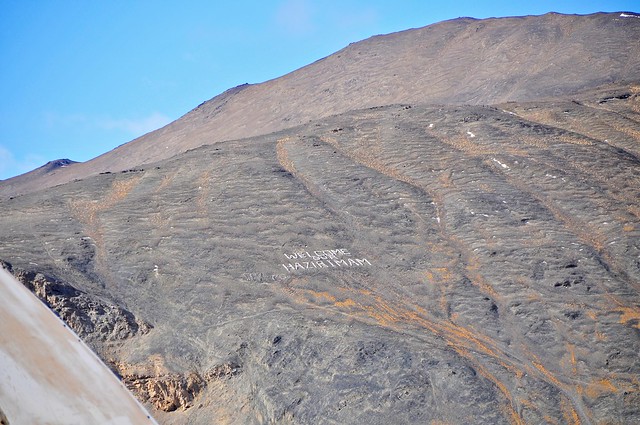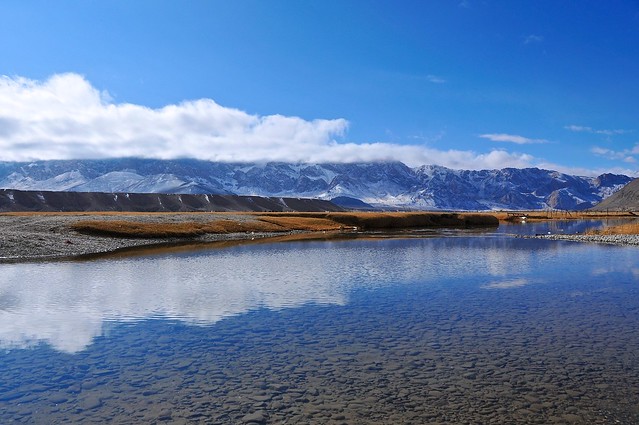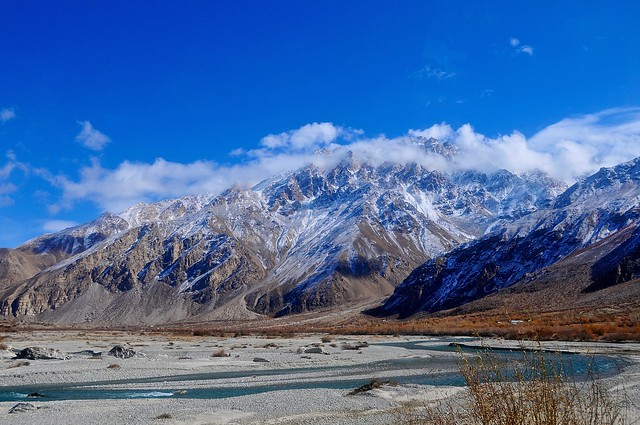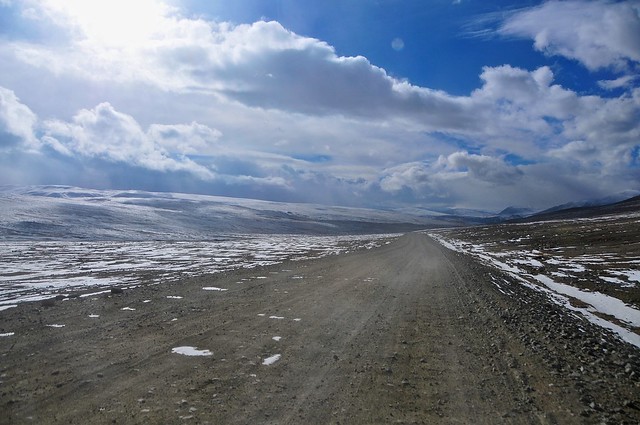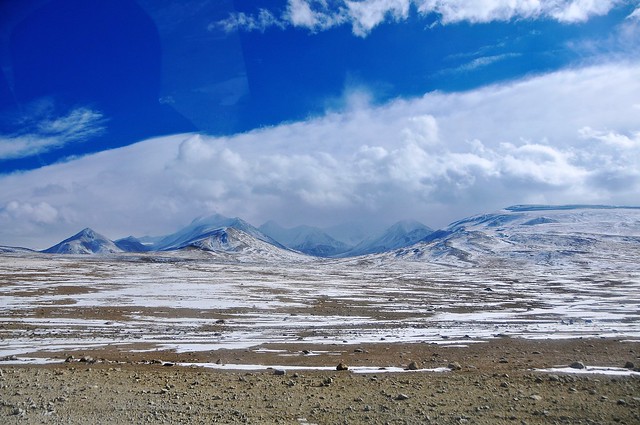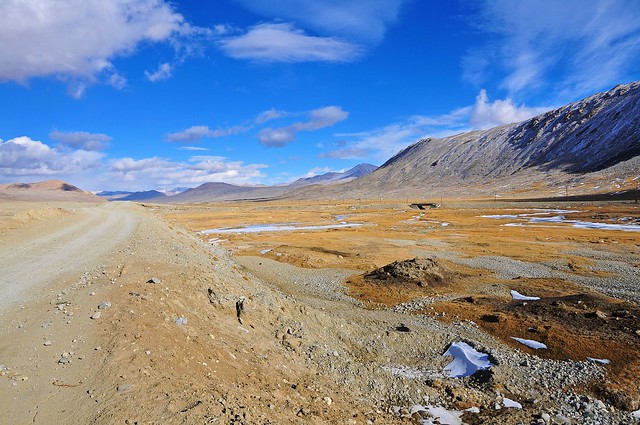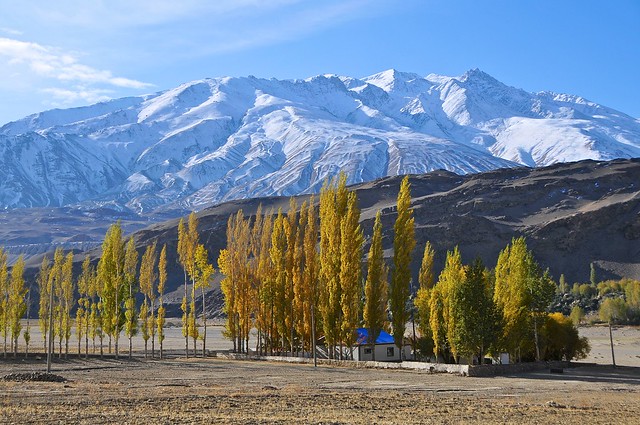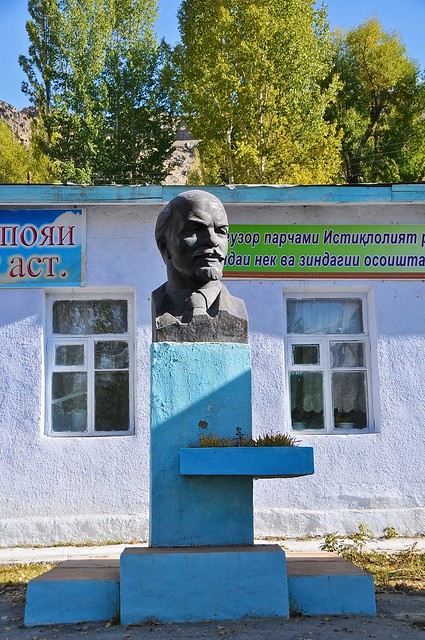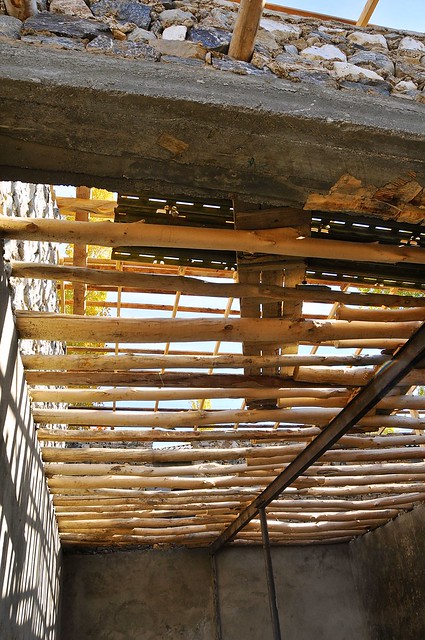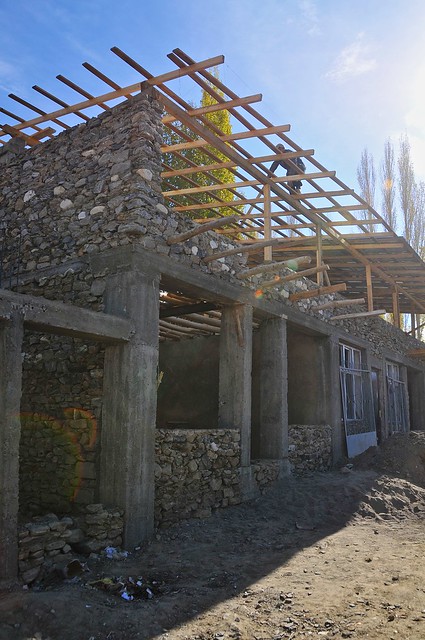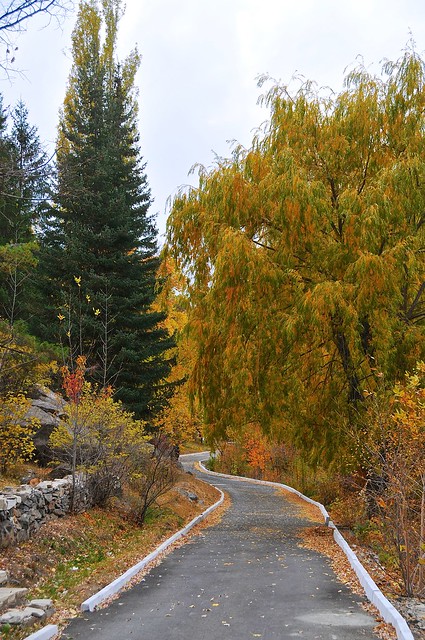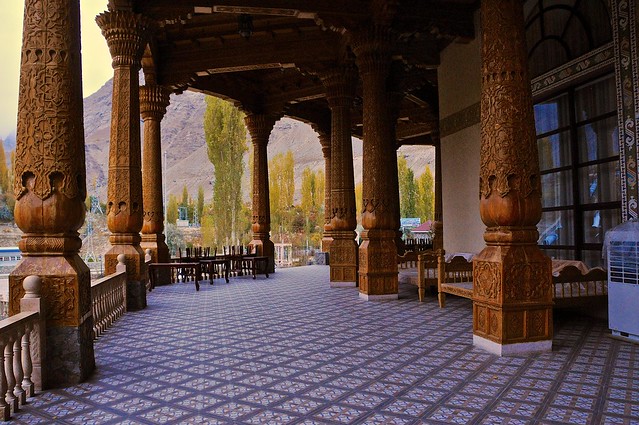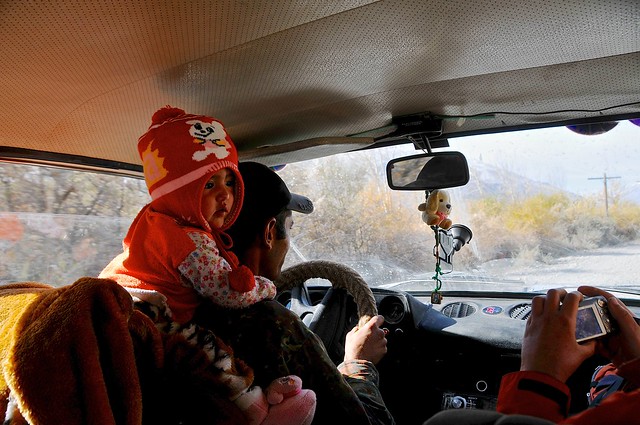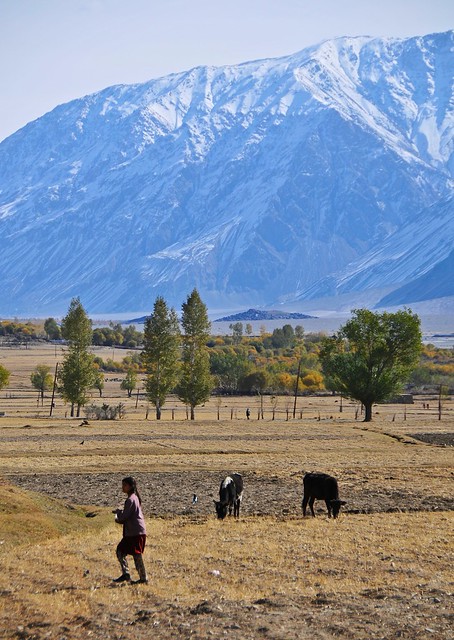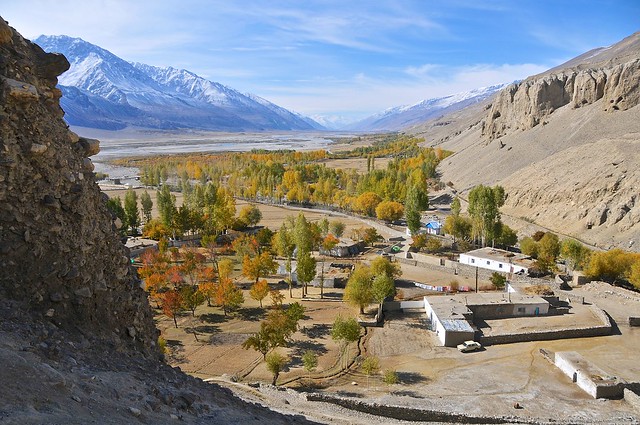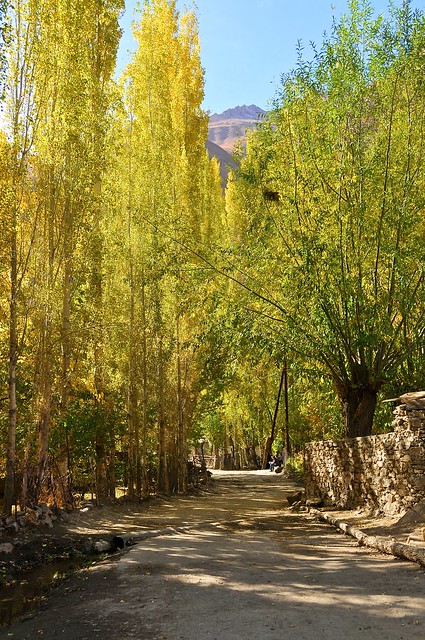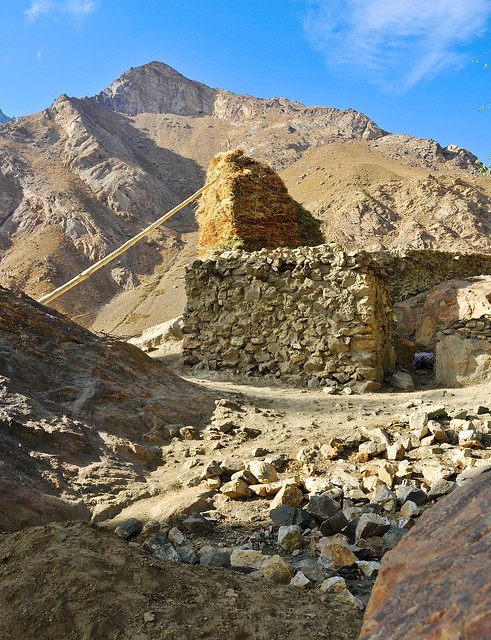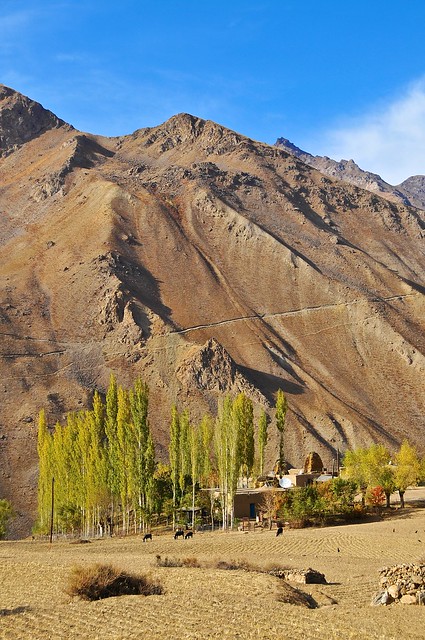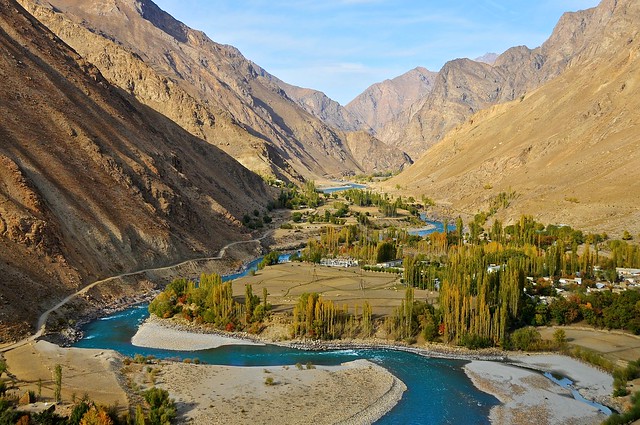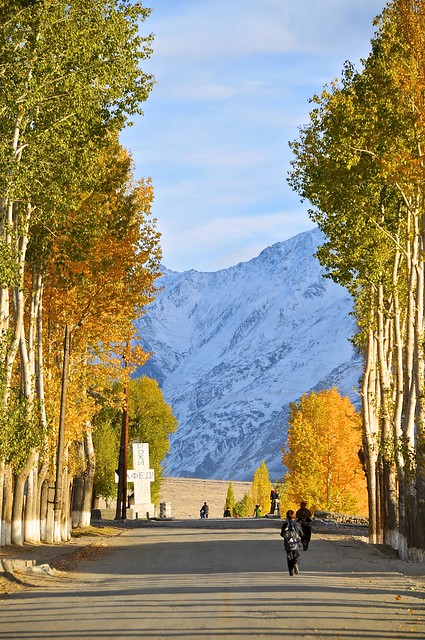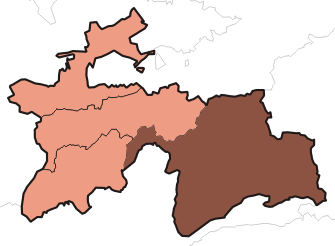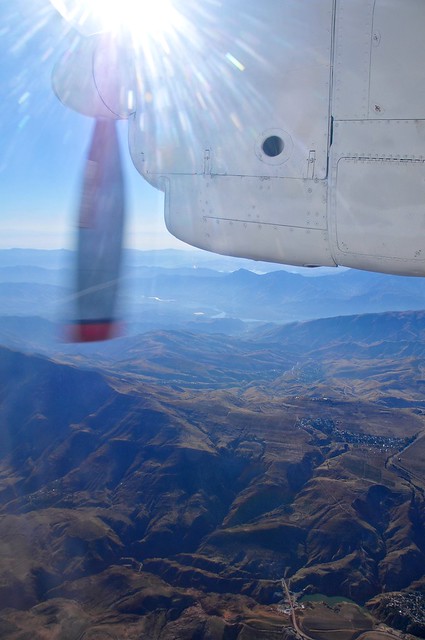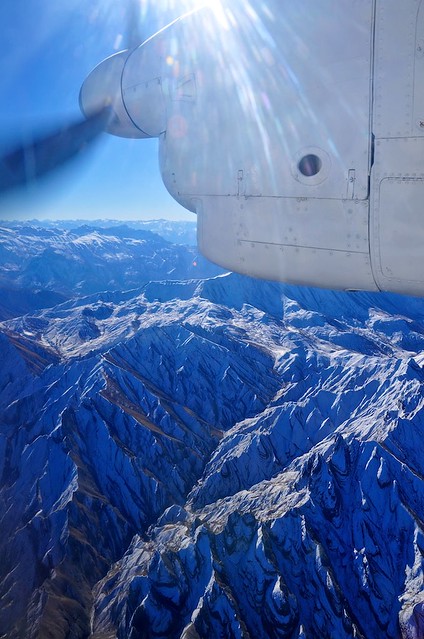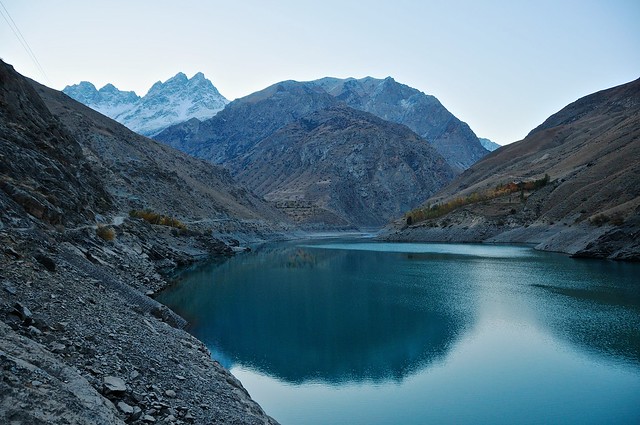GBAO: the Gorno-Badakhshan Autonomous Oblast
Basically all of the Pamirs and the entire southeastern knob of Tajikistan falls within the administrative region known as Gorno-Badakhshan. And if ever there was a part of the country that could be said to contain nothing but rocks and water, it would be the GBAO, which occupies 45% of Tajikistan but has only 220,000 people (about 3% of the population).
Pamiris are Ismaili Shias, while most Tajiks are Sunni
The region is not only geographically distinct, but ethnically and religiously as well. The northeastern part of the GBAO, along the Pamir Highway from the Kyrgyz border until at least Murghab, is mainly Kyrgyz, while the western GBAO and areas near Afghanistan (which are significantly lower, though still above 2,000 meters) are mainly Pamiri. Pamiris have their own languages, but like Dari and Tajik, these languages are minor variants of Farsi and seem to be mutually intelligible for the most part. The main point of distinction between Pamiris and the Tajik is religious: while lowland Tajiks are Sunni, like 90% of Muslims in the world, Pamiris are Shia—and more specifically, Ismaili (which are only 20% of Shias).
Attending university in Calgary, I knew quite a few Ismailis: we had a sizeable population of Gujarati Ismailis who worked as traders and settled in East Africa, but were then
expelled from countries like Uganda after they gained independence (Indian merchants being convenient scapegoats). Many seem to have
somehow made their way to Calgary. Indeed, the beloved mayor of Calgary,
Naheed Nenshi, is an Ismaili Muslim of Tanzanian extraction.
So who are the Ismaili's? Well, here's an excerpt from a great piece on Ismaili Islam on Paul's Travel Blog:
The Tajik Pamirs and northern Pakistan share not only mountainous
terrain and certain ethnic/cultural links but also religion: Ismaili
Islam. The Ismailis are Shiite Muslims who believe that the true
seventh Imam was a man named Ismail rather than his younger brother
Musa, as the Twelver Shiites (such as those of Iran) believe. While
during certain periods, such as the Cairo-based Fatimid Empire, Ismailis
were a powerful force, today they form a small minority of Muslims,
often scattered in remote mountainous terrain.
The historical distinction between Ismailis and other Shiites may
seem minor, but, over time, this simple succession dispute has led to a
universe of divergence, as Ismailis have become among the most
progressive of the Islamic sects, in stark contrast to the Shiites of
Iran. Indeed, the distinction between Ismailis and other Muslims has
grown so great that one (Sunni) Kyrgyz woman in Tajikistan told us that
the Tajik Pamiris were not even Muslim. Of course, despite the strong
lingering of pre-Islamic beliefs and traditions the Ismaili Pamiris are
in fact Muslim, as are the Ismaili Hunzas of northern Pakistan, but it
is true that the Ismaili worldview of the twentieth and twenty-first
centuries is clearly a world apart from some other sects of Islam, and,
to this outsider, far more appealing.
Ismailis are also different from most other Muslims in that they have the Aga Khan as a living spiritual advisor, whom they see as a direct descendant of the seventh Imam, and more importantly they believe that he is able to interpret the Quran in the modern context. I suppose this might make him something like the Pope, but the Aga Khan is quite different than the Pope in that he is an extremely modern man (in this he more resembles the Dalai Lama), was born in Switzerland, and is something of a playboy. Imagine Tony Stark as the leader of a branch of Islam and you're not too far off. I mean, his parents were divorced and his father then married Rita Hayworth, which tells you a lot about his family and their values—especially given that his grandfather was the prior Aga Khan and passed on his duties to his grandson because he wanted even more modernity from the future leader.
The net effect of having a branch of Islam being led by this Swiss-born spiritual leader is that Ismailis are hugely progressive by the standards of just about any religion, and the hugely wealthy Aga Khan remains close to his followers and spend hundreds of millions of dollars per year through his Aga Khan Foundation and Aga Khan Development Network to advance the development of his people and their surrounding communities.
The impact of the Aga Khan and the magnitude of his contributions are most apparent in the GBAO—and in Khorog in particular—as so many of the things that make the town so special have been funded by the Aga Khan. From quite literally building bridges that connect communities and countries, to providing food aid during the civil war, to spending in the medical community, to providing education, to hearing people in the streets tell you that they do things (or don't do things, like drugs) because of the guidance of the Aga Khan. One area where you see a real difference is in how women are treated. Unlike in the ultra-conservative Fann Mountains, women play a real role in civil society and assume positions of leadership within families. Girls are not second-class citizens, women don't run away from even the most fleeting contact with men, and there seems to be no thought of denying them education because of their sex. It's no coincidence that the homestay I stayed at is known as Lalmo's homestay, and not Lalmo's husband's homestay: women are empowered to a startling degree.
The post-Independence Civil War
Now, in the paragraph above, I alluded to
the civil war. Tajikistan is the only one of the Central Asian CIS countries that devolved into civil war following independence from the crumbling Soviet Union, and given the cultural and logistical differences between the GBAO and the rest of the country perhaps it's no surprise that Badakhshanis and the lowland Tajiks were on opposing sides... or that the lowlanders won.
The current President, Emomali Rahmon, came to power as a result of the civil war, and he has basically been the only leader that an independent Tajikistan has ever known. In the wake of the civil war it seems that Rahmon granted government positions to a number of warlords and opposition leaders in a attempt to placate them and ensure a measure of government support—something that was probably of special interest given the strategic importance of the GBAO given its long borders with China and especially Afghanistan.
Despite these concessions, there has been a long history of tensions between the Pamiris and lowland Tajiks. Part of this tensions is religious (many Tajiks think that Ismaili Islam isn't a pure or legitimate form of Islam, epsecially since it views the Quran as open to interpretation by the Aga Khan) and part of it is a resentment by the Pamiris that the government treats them unfavourably (you certainly hear people saying that there were better services during the Soviet era, and although you hear this in lots of former second-world countries, in the Pamirs I think there is the suspicion that the decline has been due to them being Pamiris and not lowland Tajiks). Virtually everyone in the GBAO will self-identify primarily as something other than Tajik, be it Kyrgyz or Pamiri.
First impressions: walking from the Airport to Lalmo's
I don't know what I was expecting from Khorog. Something high and harsh, maybe. Small and rough. And definitely running north-south along the border with Afghanistan. On pretty much all fronts I was surprised. Although Khorog is at an elevation of over 2,100 meters, the town is surprisingly green and full of trees. And for late October, it was a lot warmer than I expected, and pleasant to walk around in the sun. Heck, this would be better weather than one would expect in Calgary, and the climate also supports a greater range of trees. Looking at weather profiles for Khorog, however, it seems like a remarkably temperate city, with the average high in October of 18°C (65°F)—only in January is the average high below freezing.
And despite the harrowing road journey from Dushanbe, Khorog didn't feel as isolated as I expected. The markets were well stocked—certainly much more so than I saw in Kyrgyz Alay Valley communities like Sary Mogul, Sary Tash, and Daroot Korgon. Maybe this shouldn't be so surprising, as it actually lies on the closest road to China, which would run through the Pamir border of Qolma before running through Murghab and Khorog on the way to Dushanbe.
Among the ubiquitous Chinese goods at the market there were some distinctly Pamiri items like huge and bulky socks and knitted toques ("knit cap" in American). Perhaps the only way the town revealed its isolation was in the food situation, as there didn't seem to be many restaurants.
 |
| An old Soviet-era social-realism style painting on a pole. |
 |
| The "Hitler" look is apparently respectable in Tajikistan. Or maybe it demands respect. Or fear. Or something. Based on some things I later saw in Murghab, this guy appears to be some sort of government official. |
 |
| Khorog lies along the northern and southern slopes of the Gunt River, just before it joins the north-south flowing Pyanj river, which forms the border with Afghanistan.The Gunt almost seems bigger than the Pyanj. |
